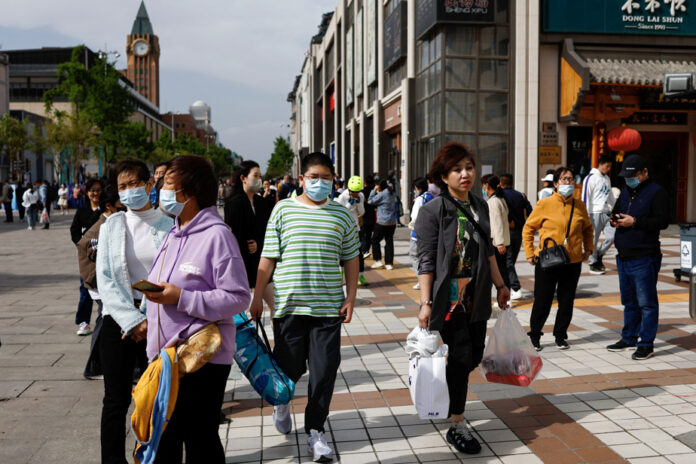(Beijing) Freed from health restrictions, China recorded a marked acceleration in its growth in the first quarter, according to official figures published on Tuesday, the first to assess a full quarter without the impact of zero COVID-19.
This draconian health policy, which included mandatory quarantines, repeated confinements, PCR tests and travel restrictions, was lifted in early December.
Since its implementation in 2020, it has dealt a severe blow to the economy due to the climate of uncertainty generated and the inconvenience caused in the daily lives of Chinese people and businesses.
The end of the measures allowed activity to pick up sharply in the first quarter: China’s gross domestic product (GDP) thus increased over one year by 4.5%, announced the National Bureau of Statistics (BNS).
This is the first time since 2019 that a full term has been assessed without the impact of health restrictions. Analysts polled by AFP predicted a more moderate increase (3.8%), after that of the fourth quarter of 2022 (2.9%).
Quarter-over-quarter, the Asian giant’s GDP is up 2.2%, according to the SNB.
The official figure for growth in China, eminently political and subject to caution, is nevertheless still closely scrutinized given the weight of the second largest economy in the world.
Retail sales, the main indicator of household consumption, confirmed their recovery in March, advancing by 10.6% year on year, their fastest pace since June 2021.
They had experienced four months of contraction at the end of 2022, before rebounding in January-February combined (3.5%).
“Domestic consumption is proving to be a pillar of the recovery” in the first quarter, notes analyst Ken Cheung of Japanese bank Mizuho.
In recent weeks, the Chinese are returning to restaurants, starting to take the train or the plane again, helping to revive services. However, consumption “has not yet returned to its pre-pandemic level”, underlines Teeuwe Mevissen, analyst at RaboBank.
The real estate crisis, which caused many properties to lose value, and losses of income due to the pandemic partly explain this phenomenon, according to Mr. Mevissen.
Real estate, which together with construction represents about a quarter of China’s GDP, is for many Chinese an investment and a must before marriage. The sector is weakened by weak demand, at a time when many developers are fighting for their survival in a context of buyer mistrust and falling stone prices.
However, the situation is tending to improve partially thanks to support from the authorities, which allowed prices to stabilize in March, according to the latest figures on Saturday from the National Bureau of Statistics.
For its part, industrial production was up 3.9% year on year last month – lower than Bloomberg analysts’ expectations of 4.4% – but higher than January-February (3. 5%).
The unemployment rate fell to 5.3% in March from 5.6% a month earlier. But it remained particularly high last month among 16-24 year olds (19.6%).
As for fixed capital investment, its growth since the beginning of the year was 5.1% at the end of March.
In the second quarter, the recovery of the Chinese economy is likely to be even more marked, due to a weak basis of comparison with that of last year at the time of the confinement of Shanghai, forecasts the analyst Ting Lu, of Nomura bank.
China is aiming for around 5% GDP growth this year.
But geopolitical tensions with the United States, the threat of recession in the main economies and global inflation will weigh on the growth of the world’s workshop in the coming months, analysts warn.
Experts interviewed by AFP expect China to grow by 5.3% this year, an estimate close to that of the International Monetary Fund (5.2%), which is counting on the Chinese recovery to give a boost to the global economy.
Last year, the Asian giant’s GDP grew by 3%, far from the official target of 5.5% and one of the weakest rates in four decades.















